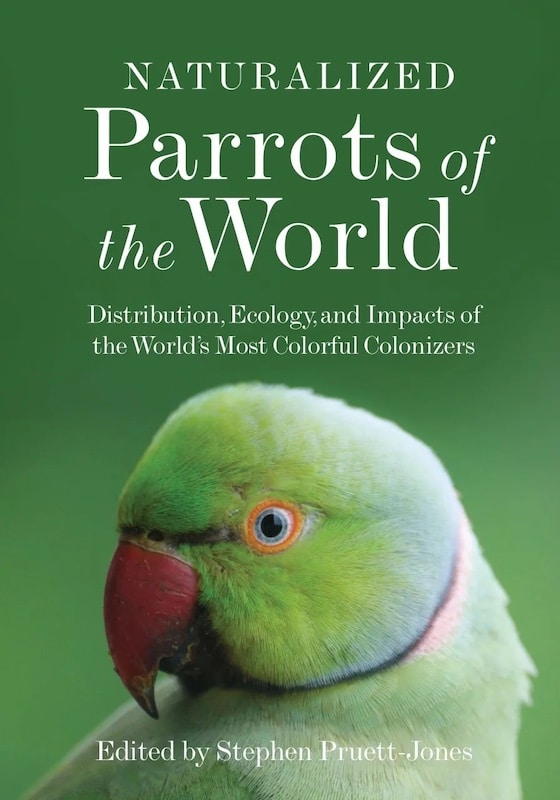| Edited by Stephen Pruett-Jones | Princeton University Press | 2021 | Hardback | 304 Pages | 50 colour photos, colour illustrations and colour maps | ISBN: 9780691204413 | £34.99p |

The Publisher’s View:
There are more than 350 species of parrots in the world, and approximately 300 of these species have been transported to other countries through the caged pet trade. Whether through escaped captivity or purposeful release, many of these parrots are now breeding in new habitats. Indeed, no less than 75 species of parrots have established breeding populations in countries where they were introduced, and parrots are now among the most widely distributed group of birds. Naturalized Parrots of the World is the first book to examine this specific avian population.
Bringing together the work of leading researchers in one convenient volume, this book explores the biology of naturalized parrots and their interactions with native ecosystems. Experts discuss the global distribution of parrots, their genetics, conservation implications, and human responses to these birds. They also consider debates surrounding management issues and the lack of consensus around non-native species in the wild. Later chapters feature case studies of the two most successful species – the rose-ringed parakeet and monk parakeet – as well as studies of the introduced parrot species located in specific countries and regions, including the United States, United Kingdom, Spain, Portugal, northern Europe, South Africa, and Australia.
Highlighting critical aspects of conservation biology and biodiversity, Naturalized Parrots of the World will be an invaluable resource for parrot owners, ornithologists, conservation biologists, and birdwatchers.
The Author: Stephen Pruett-Jones is an associate professor of ecology and evolution at the University of Chicago. He has spent forty-five years studying the biology and behaviour of birds in North America, Australia, and Papua New Guinea.
Others’ Views:
“Naturalized Parrots of the World interested me from beginning to end. Delving into genetics, ecology, conservation impacts, human dimensions, research opportunities, and even control methods for species in their native and invasive ranges, this book will attract a wide readership.”
– Scott K. Robinson, coauthor of Conservation of Tropical Birds
“This is a good and well-focused book of introduced parrots worldwide.”
– Stuart Marsden, Manchester Metropolitan University
Fatbirder View:
It’s really good to get the facts! I’ve lost count of the number of times I’ve been told that feral ring-necked parakeets are a menace as the out compete native species for nest holes, take food from feeders that natives would otherwise get and are a growing menace for fruit farmers.
As I’ve always suspected this just is not the case in the UK. There have been a couple of incidents involving two small sites, one a vineyard where significant loss has been recorded… but not the wholesale pillage predicted. It turns out there is nothing to suggest they out compete native species for anything.
This is not to say that they are not a problem in some places at some times, just as many other species worldwide have adapted and thrived after escaping aviaries etc.
It’s interesting to learn the Monk Parakeets often favour power poles for their nests, something I’ve seen for myself in the US.
What is clear is that many species of parrots have adapted to what might appear quite unsuitable climes and, most often, particularly favour cities.
That I’ve read enough to know these facts is testament to the accessibility of this book. While it summarises many studies and scientific papers it is neither turgid and impenetrable nor dry and dusty. The prose is bright, informative and accurate without using jargon or esoteric language.
It’s definitely an addition to the ornithological cannon while also of interest to us amateur birders.
Great stuff!
Fatbirder
